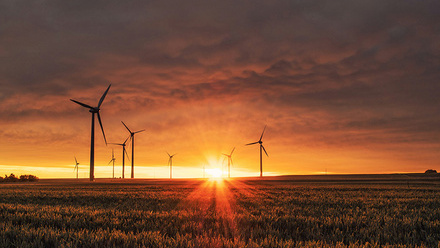Calls for rapid decarbonisation of the UK electricity system
A report from the National Engineering Policy Centre includes recommendations for delivering the required grid, generation and system flexibility under an accelerated timescale.

Compiled by an independent working group led by the Royal Academy of Engineering, Rapid Decarbonisation of the GB Electricity System highlights the need for government to clearly set out the value of this target as a national mission, in a similar way to the work of the vaccines task force.
The report sets out six key elements that should be central to the new Industrial Strategy:
- Building strong support for the vision, to form the basis of an enduring agreement with both the public and industry and help them to embrace the coming changes.
- Strong central leadership and governance with engineering at the forefront, accountable to the Prime Minister.
- A digitally enabled system that allows the public to engage with the system more flexibly, benefiting grid operation and saving consumers and government money.
- A front-foot approach to procurement and regulation to ensure the UK can get ahead in the global race to decarbonise electricity.
- Tackle difficult decisions on planning, consenting and connection delays while building public support.
- Retain a long-term view to ensure that the intense focus on delivery towards 2030 does not delay near-term actions needed to unlock the best options for post-2030.
Delivery of a highly decarbonised electricity system by 2030 will require a sharp increase in offshore wind capacity, says the report, as well as ensuring delivery of the transmission network that is already in train, and expanding onshore wind and solar generation, particularly in places where the grid already has capacity to accept new generation.
Government will also need to engage with domestic, commercial and industrial electricity users so that demand shifts to the times when wind and solar generation is highest, as well as ensuring smooth supply through a portfolio of storage solutions.
Anticipatory investment will be key to success, says the report, with new grid infrastructure and increased distribution capacity identified as central priorities to the 2030 mission.
Difficult choices will reduce the time taken to deliver new grid infrastructure and connect power generation assets.
This will mean confronting new transmission timelines and planning, grid connection queue delays and supply chain constraints.
Adding renewable capacity in locations that can be readily accommodated without new power lines where possible and implementing a more proactive supply chain policy with clear signals to investors, are both identified as potential solutions.
Beyond 2030, the report highlights changes to a future energy system that cannot be delivered before 2030 but require action this decade. These include:
- Achieving progress on hydrogen storage and transmission.
- Greenlighting and expanding carbon capture and storage projects and related CO2 transport and storage.
- Investing significantly in the distribution network to manage further electrification of heat and transport.
- Further expansion of generation, including nuclear projects and potentially including a broader range of renewables such as tidal.
- A national engineering and technology workforce strategy to address skills deficits in the short and long term, including the need for an additional 200,000 engineers and technicians working in the energy sector by 2030.












